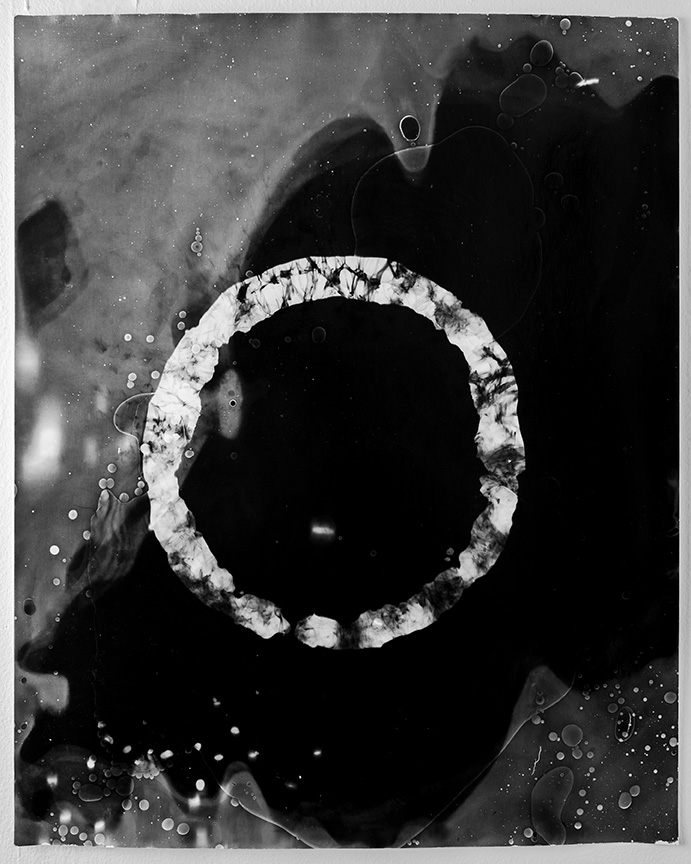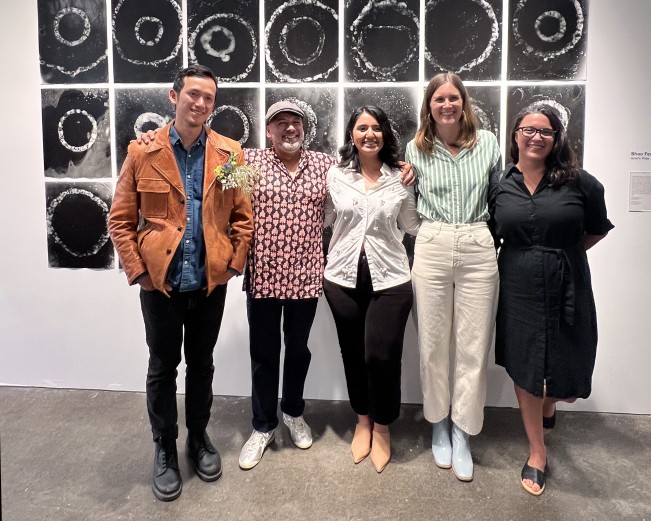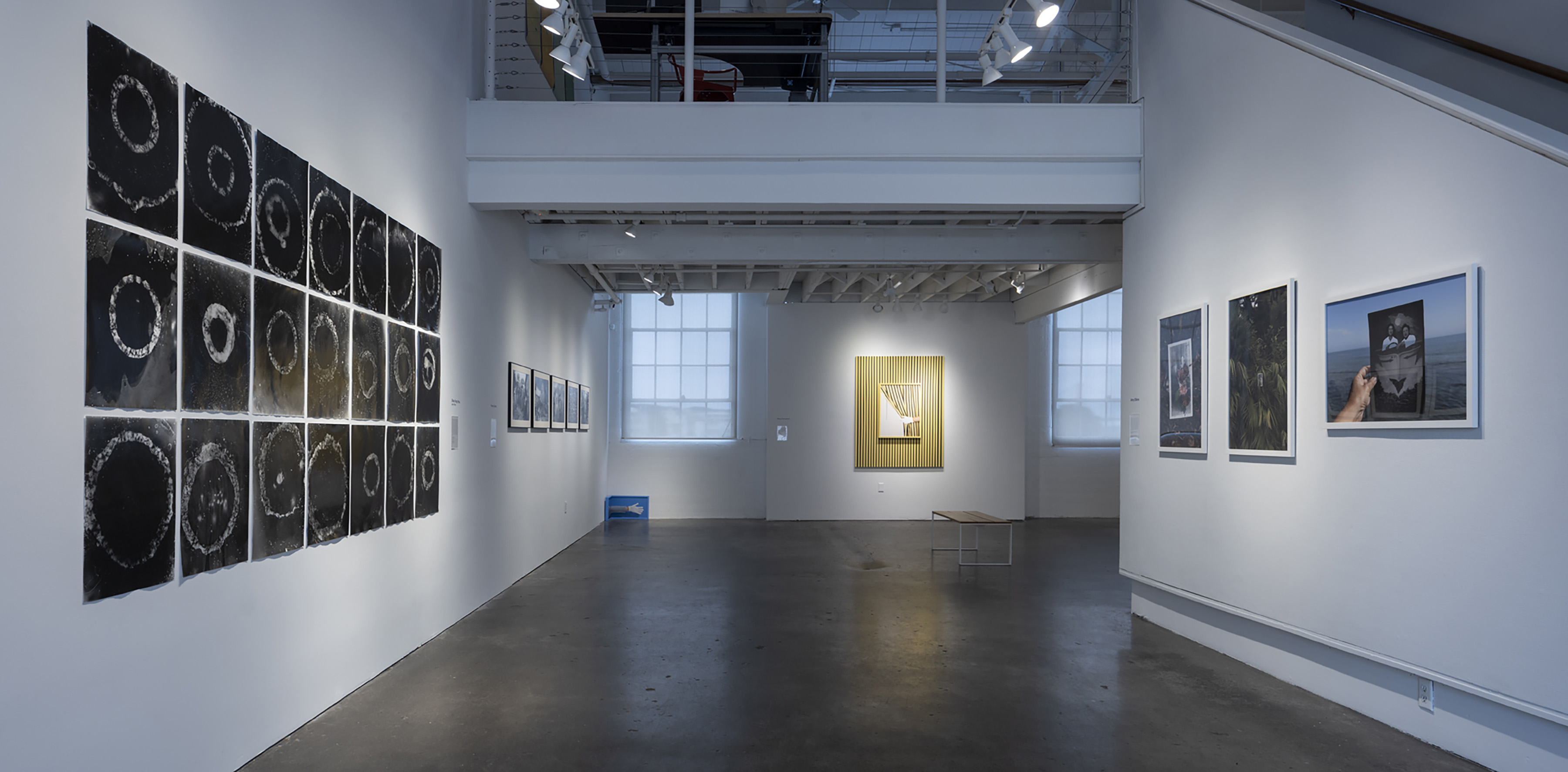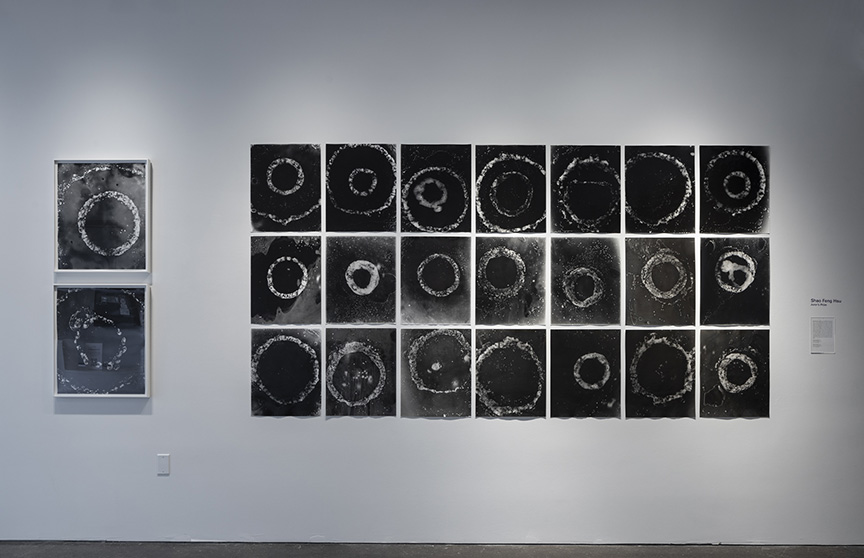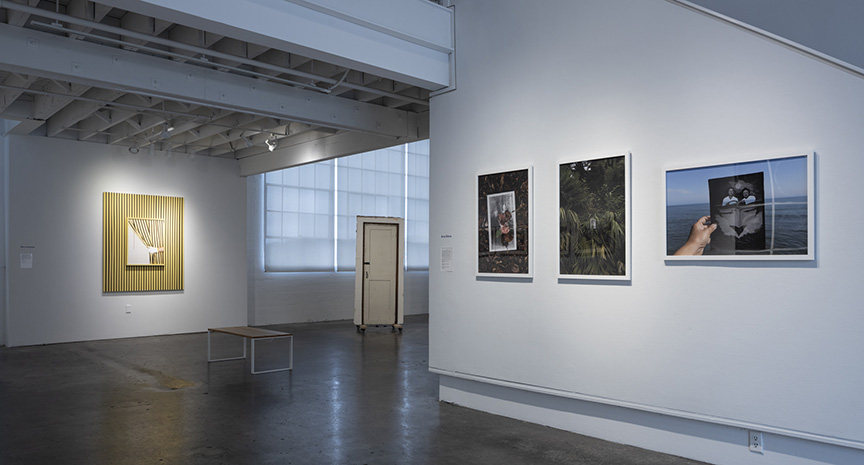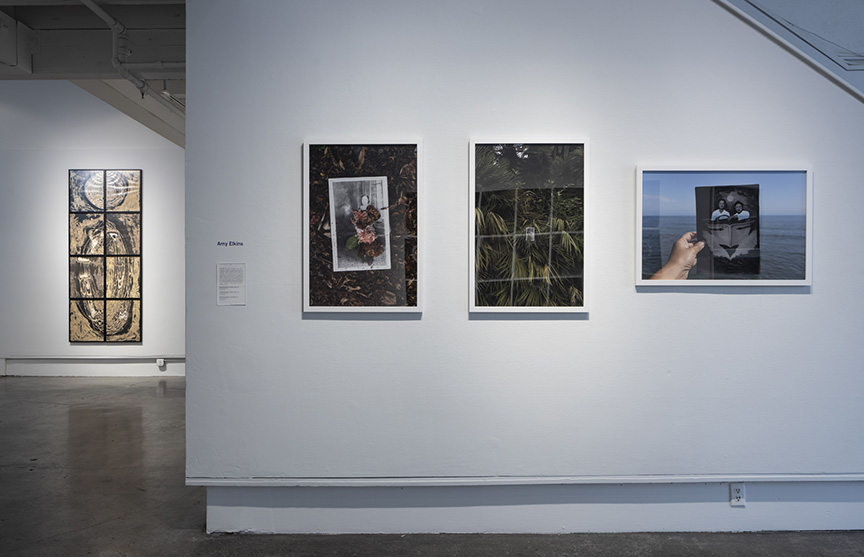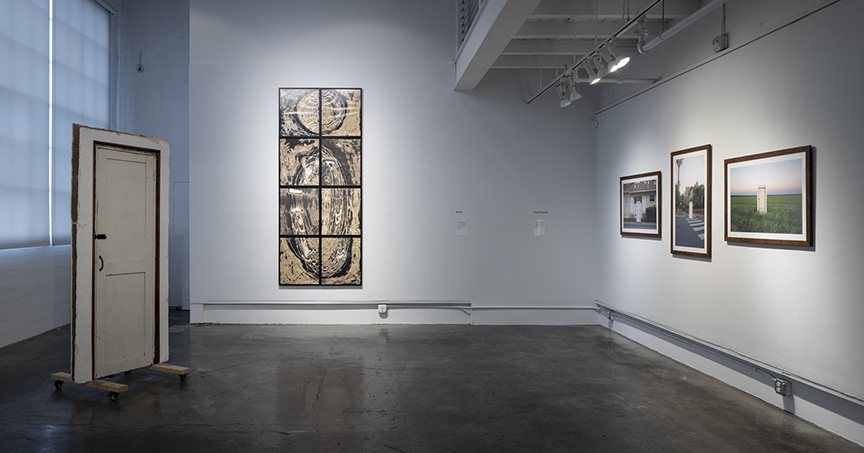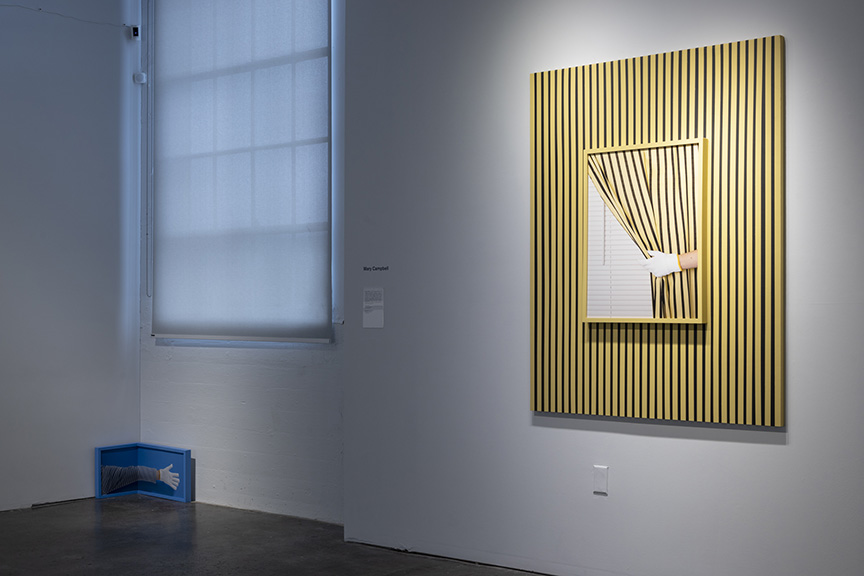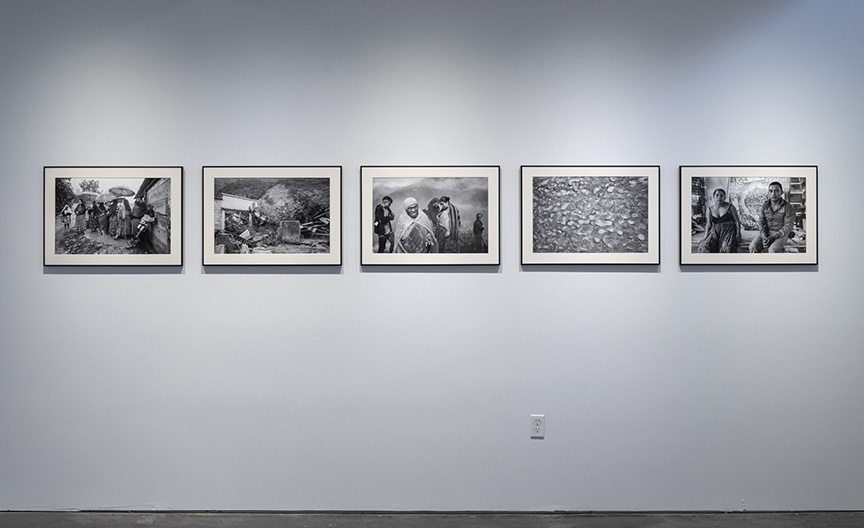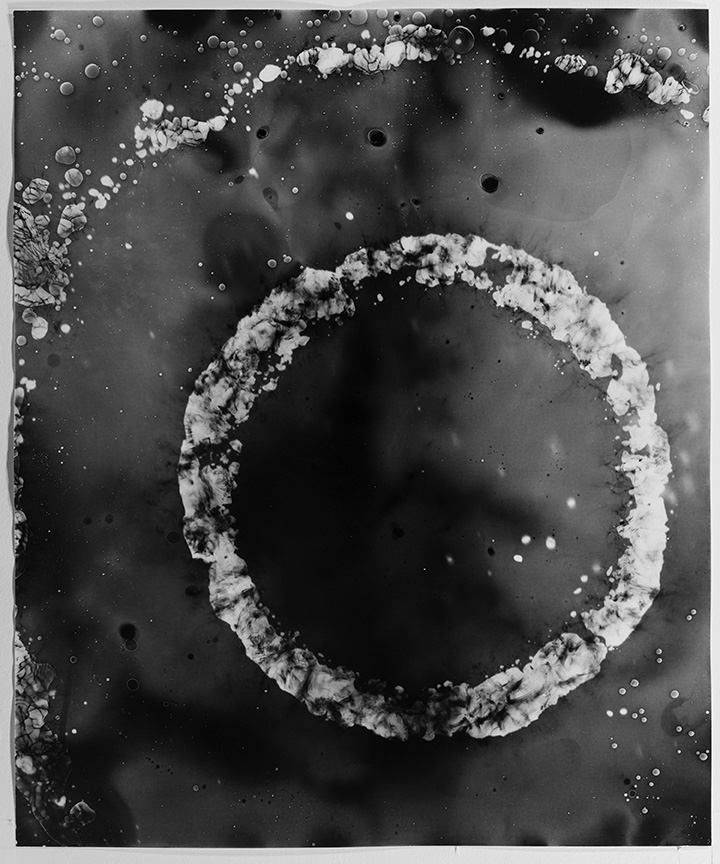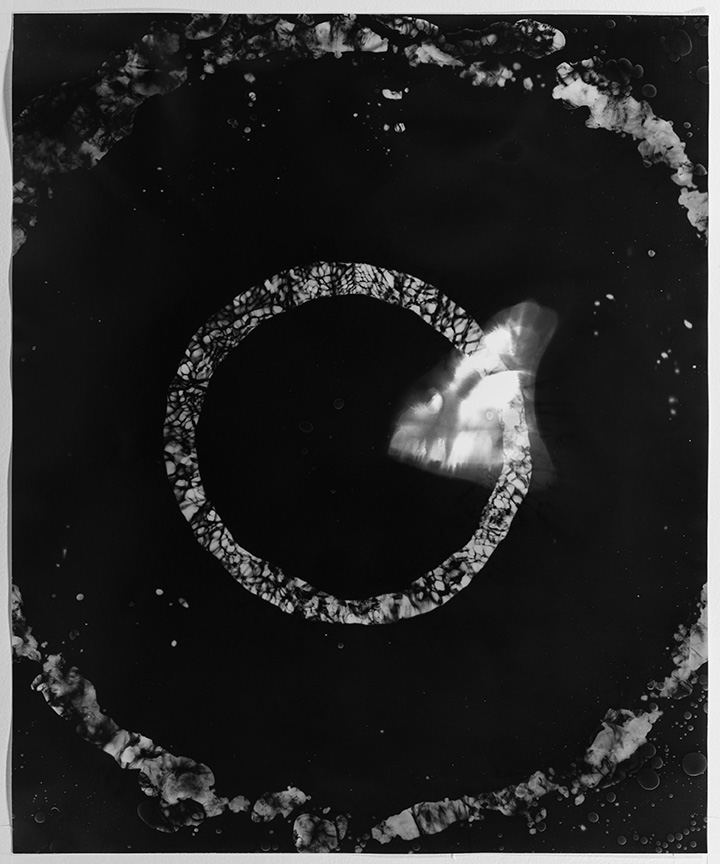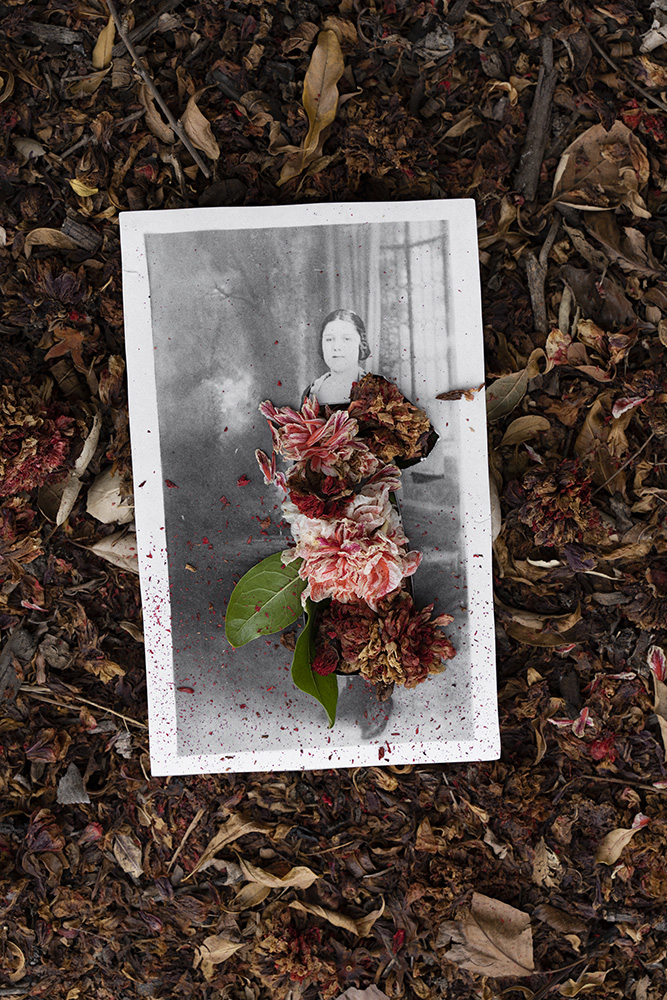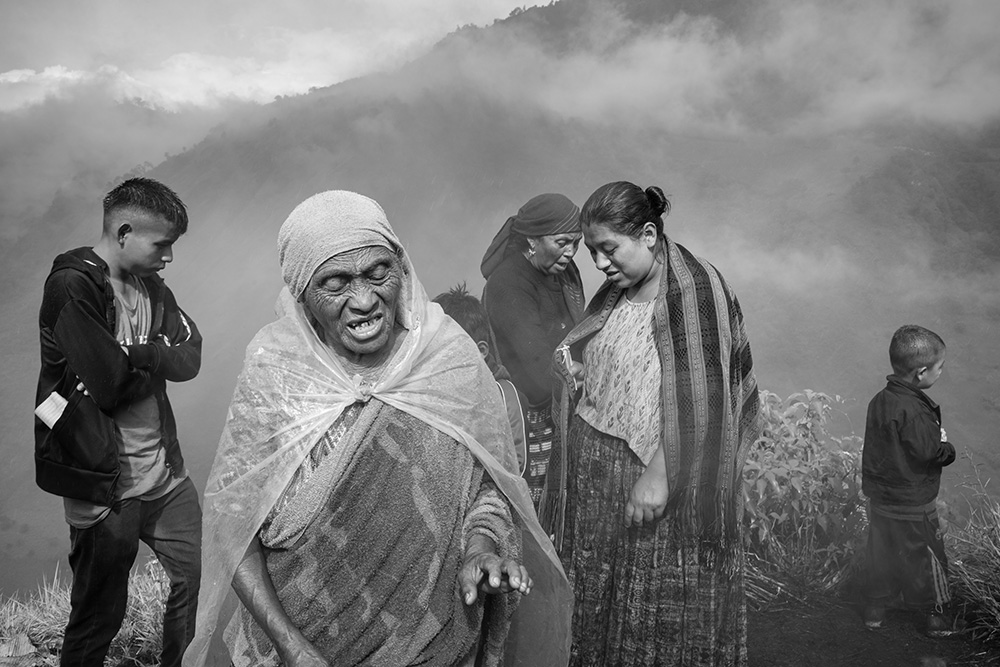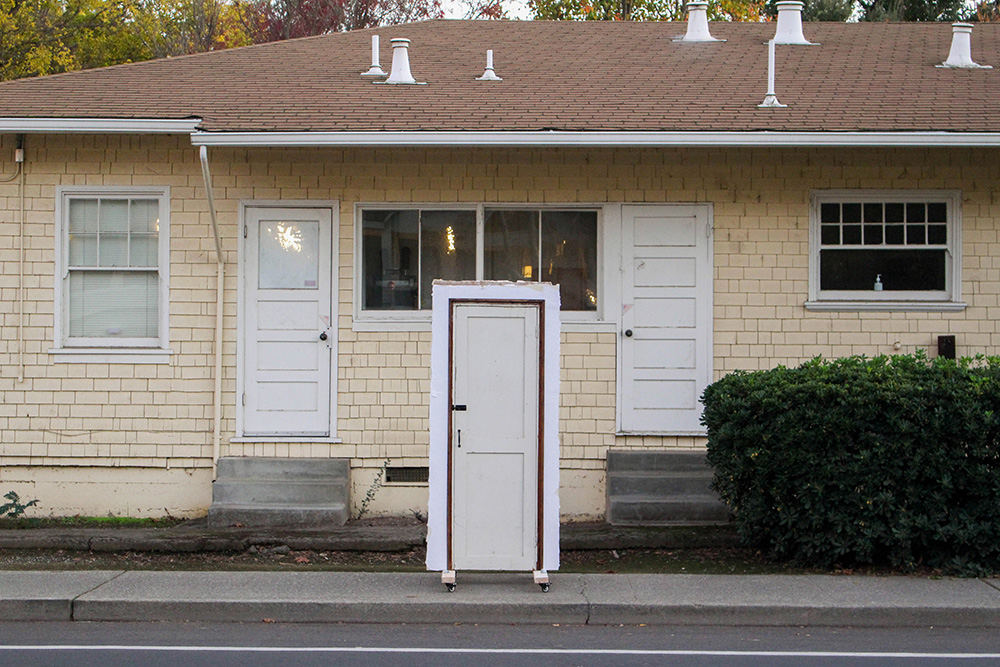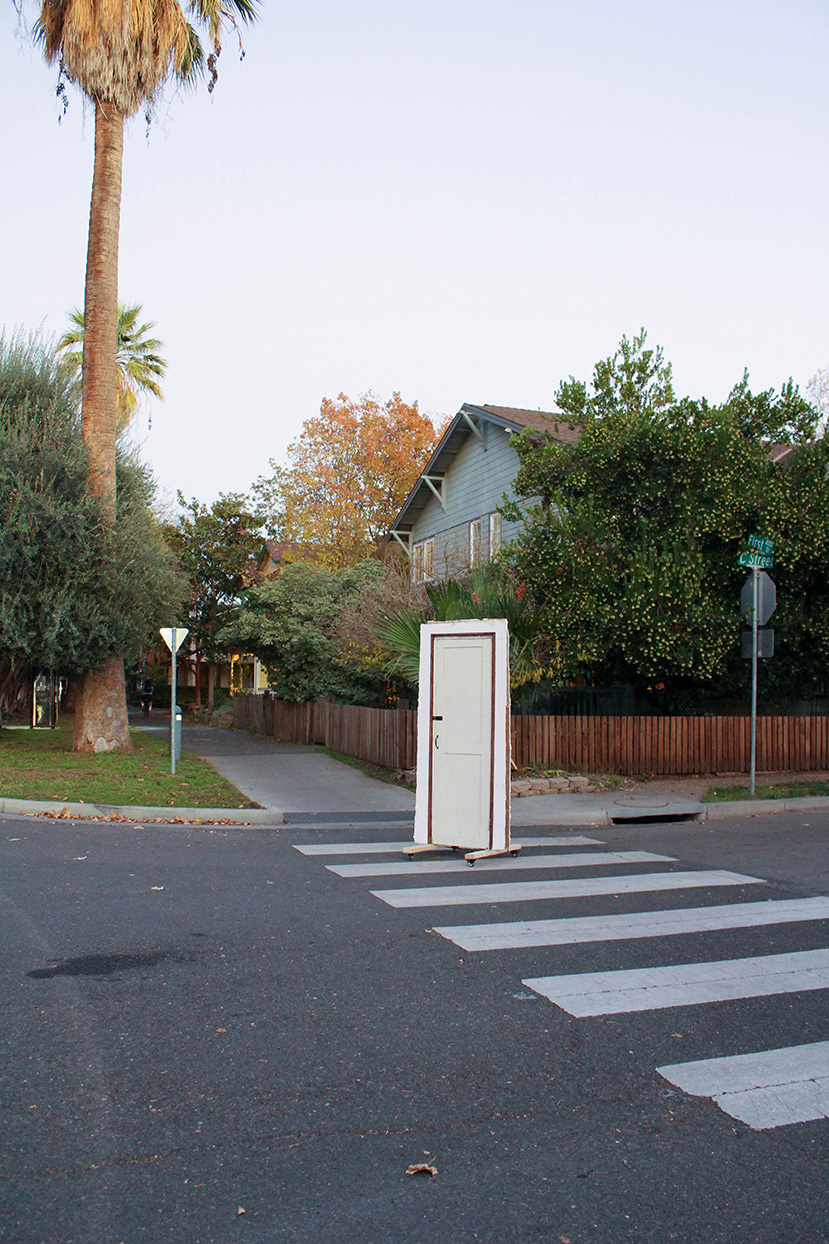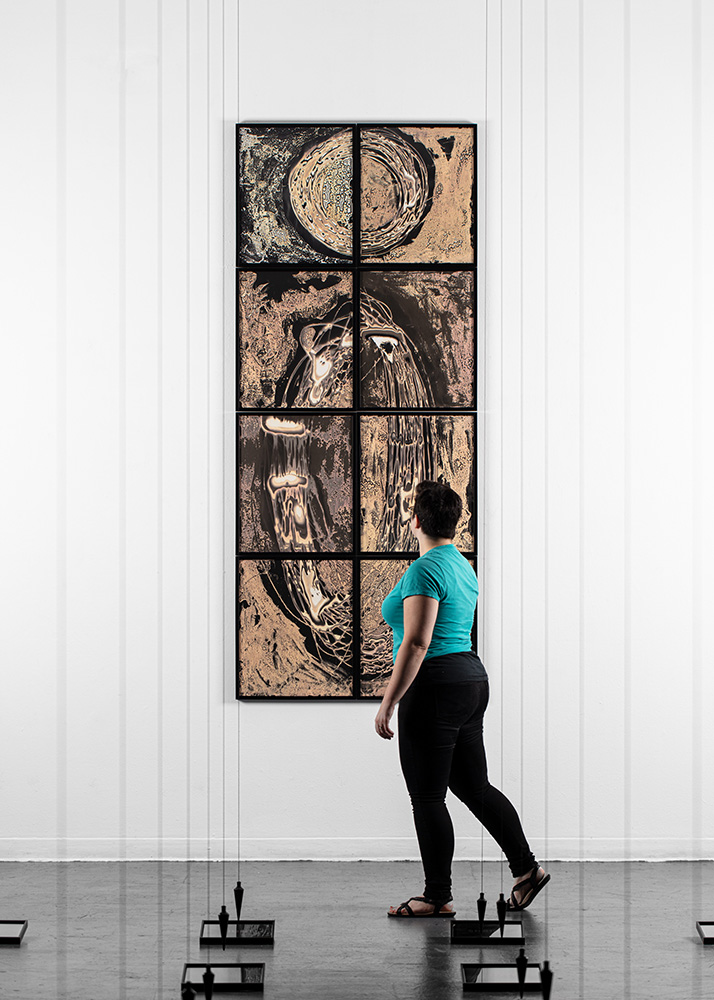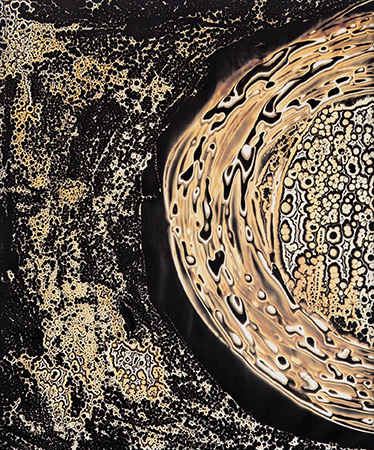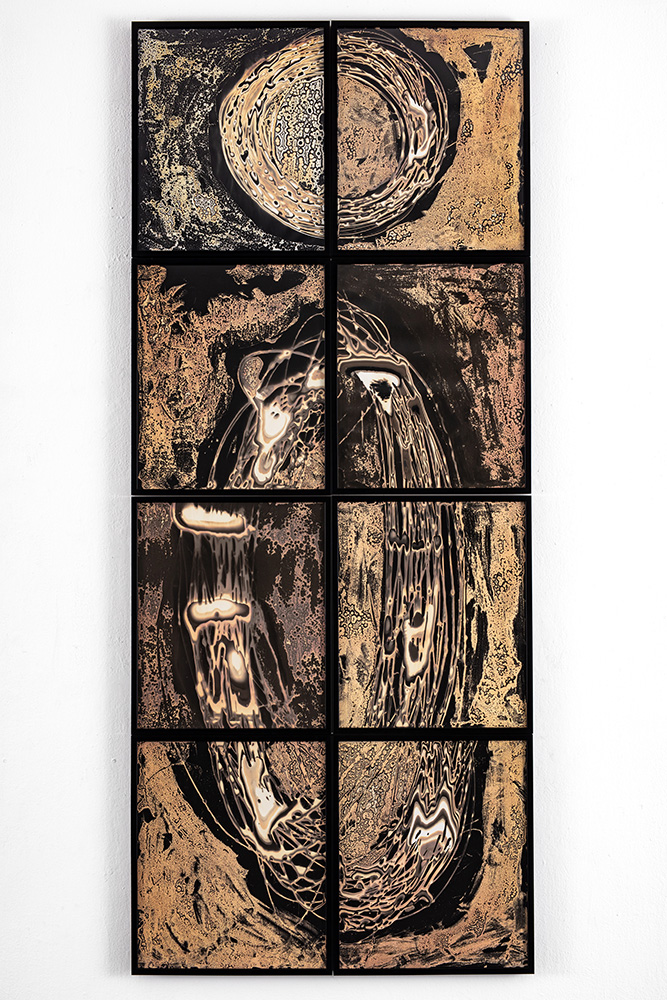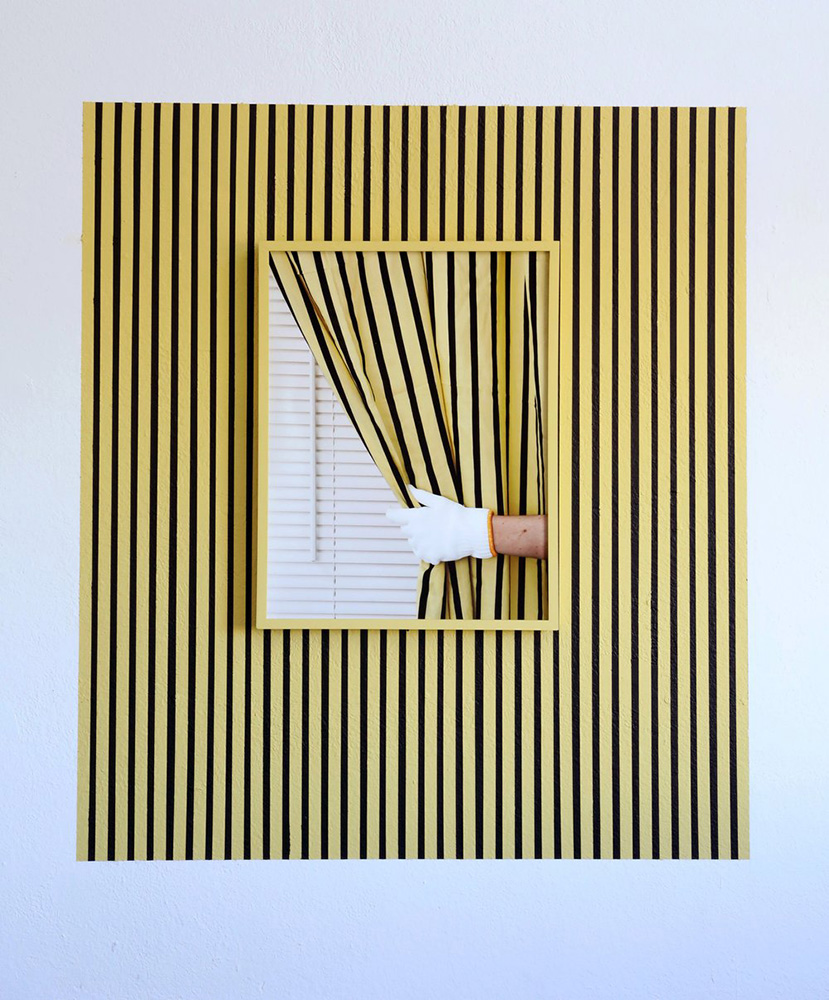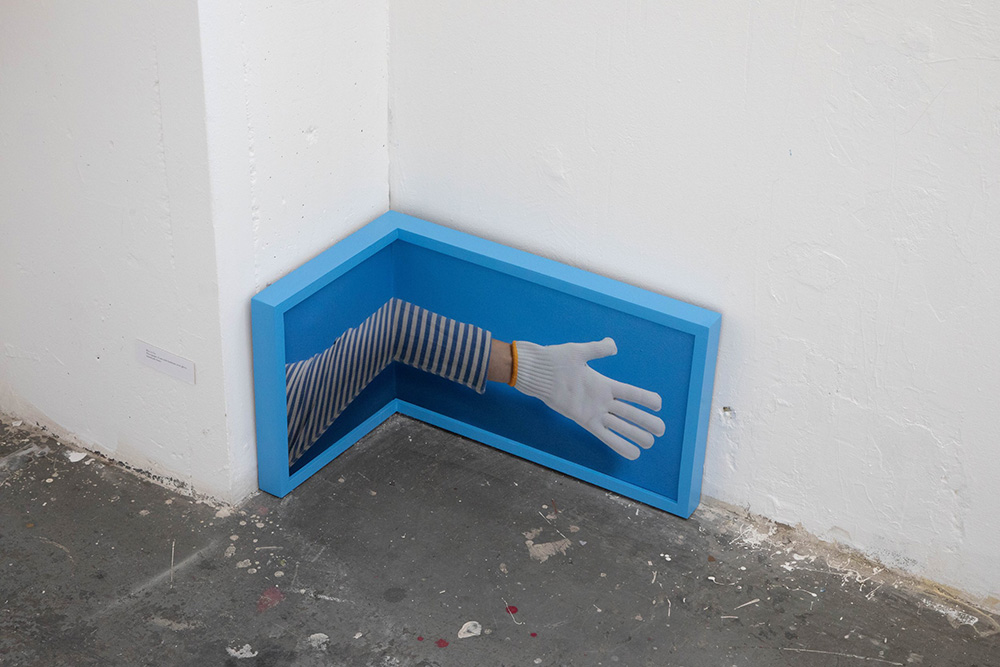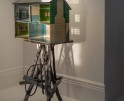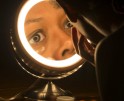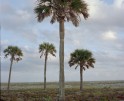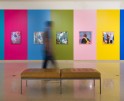San Francisco Camerawork: Forecast 2023
SF Camerawork has recently opened its annual survey exhibition, FORECAST 2023. Each year SF Camerawork invites an esteemed jury of artists, curators and critics to select and showcase the work of emerging imagemakers, with an eye toward current movements, trends and concerns in contemporary photography. This year, the jurors were two Bay Area artists Ashima Yadava and Minoosh Zomorodinia that have selected the work of Mary Campbell, Harvey Castro, Amy Elkins, Shao-Feng Hsu (Juror’s Choice Award), Kai Ito, and Helia Pouyanfar. FORECAST 2023 will be on view through August 5, 2023.
FORECAST 2023’s jury and SF Camerawork’s staff were impressed not just by the aesthetic quality of the selections but also by the breadth of this cohort’s subjects, which include archival interventions (Elkins), documents and interpretations of urgent geopolitical issues (Castro, Pouyanfar), innovative abstraction (Hsu, Ito) and even formalist whimsy (Campbell).
Juror Bios:
Ashima Yadava is an India-born, conceptual documentary photographer and printmaker. With the camera as her conduit, Ashima believes in art as a means to social activism and reform. Her work is rooted in long-form stories with a focus on issues of gender equality, race, and social justice. Yadava works in digital and analog methods including large format and silkscreen. Her work has been featured in various publications around the world including National Geographic, Mother Jones, SFChronicle, 6MOIS, and The Telegraph among others. Yadava is a California Arts Council Fellow and the founder of Huq: I Seek No Favor.
Minoosh Zomorodinia, Iranian-born interdisciplinary artist, makes visible emotional and psychological reflections of her mind’s eye inspired by nature/environment. She employs walking as a catalyst to reference the power of technology as a colonial structure while negotiating land boundaries. Her “strollings” reimagine relationships between land and technology, addressing transformations of memories into physical space. Zomorodinia serves with Southern Exposures’s Curatorial Council, Berkeley Art Center, SFCamerawork Program Committee, and is Co-Chair of Women Eco Artists Dialog. Her awards/residences/grants include Kala Media Fellowship, Headlands Center for the Arts, Djerassi Residency, Recology Artist Residency, Alternative Exposure Award, and California Art Council Grants. She exhibits locally/internationally including SF Asian Art Museum, Yerba Buena Center for the Arts, San Francisco Arts Commission, Nevada Museum of Art and is featured in the SF Chronicle, Hyperallergic, KQED and numerous media outlets. She earned her MFA from the San Francisco Art Institute, and MA/BA from Azad University, Tehran.
Shao-Feng Hsu, recipient of this year’s Juror’s Choice Award, is a San Francisco-based artist whose photography practice focuses on the interactions between humans and aquatic environments. Hsu’s work explores how to make images that translate his physical experience with
water, capturing the inexplicable but complex sensation of being below the water’s surface. Combining his lifelong swimming practice with his experimental process and discovery of breath photograms, his wondrous series Night Swimming expresses ideas about embodiment, identity, and the environment. Fundamentally, his work is a poetic exploration of what it means to look at photographs considering life’s essence: breath.
Instagram: @shaofenghsu
Amy Elkins is a Bay Area-based visual artist in photography, installation, and sculpture. She explores the complexities of identity and gender, including how they are impacted by systems of power: prisons, the military, and colonization. A Place Where We Are In The Sun uses the artists’ family archives, historical documents, and early Alta California maps to trace the land loss, assimilation, and resilience of Indigenous and Chicanx ancestors in Southern California. Through earnest and tender juxtapositions of natural, cultural, and archival memory, A Place Where We Are In The Sun is Elkins’s way of reconnecting her ancestors to the ever-changing land they once knew while offering an intimate counterpoint to the hardened enclosure of institutional archives.
Instagram: @thisisamyelkins

©Amy Elkins, Akuuragna/Pasadena, Huntington Library, 2021. Image courtesy of the artist.
Harvey Castro is a multidisciplinary artist, visual storyteller, and documentary photographer based in the Bay Area. Representation is crucial to Castro’s work as a documentary photographer and immigrant of color. His work delves into the complex relationship between climate change and immigration, identity, diversity, and inclusion. In his project, Los Olvidados, Guatemala, Castro creates a poignant examination of the devastating destruction left by Hurricane Eta in November 2020 in the village of Queja, Guatemala. Castro documented the tragedy in Queja, looking at how natural disasters far too often leave marginalized communities behind. Through his profound photographs, he hopes to bring attention to these communities’ resilience and struggle and ensure they are not forgotten.
Instagram: @harveycastro.co
Helia Pouyanfar is a Bay Area-based conceptual artist whose work investigates the permanently transient state of the refugee body and its negotiation and reconciliation with Place. She utilizes sculpture, installation, photography, and writing to manifest this transient state through architectural objects, images, and videos narrating the idea of Passage and the relationship between liminal spaces and transit. Born into a family of Kurdish descent in Iran, Pouyanfar moved to the United States in 2014 after living as a refugee for three years. By referencing her personal history, she is able to humanize, edify, and narrate the deeply poetic and peculiar experience of forced exile.
Instagram: @heliapouyanfar
Kei Ito is a Baltimore-based artist whose work addresses deep intergenerational connection and loss through experimental photography. The materials used to create Ito’s Burning Away are rooted in the generational trauma of the Atomic Bombing of Hiroshima, which claimed many lives, including the artist’s grandfather. Ito found many stories of survivors treating burns with honey, cooking, and even motor oil due to the scarcity of essential medicine. By utilizing the same substances described in their accounts to heal the charred trauma desperately, these prints symbolize the memory of nuclear fire but also the disappearing voices of the survivors. Through his dynamic, painterly prints, Ito’s artwork offers temporal monuments to explore social issues, and memorialize those who were lost and continue to hurt.
Instagram: @kei.ito.art
Mary Campbell is a Bay Area-based artist who finds inspiration in the theatrics of everyday life through her whimsical perspective and oddball installation techniques combined with rigorous attention to color, form, and composition. Campbell is interested in the do-it-yourself homeowner
manuals, magazine advertisements, and the loneliness of late-stage capitalism; seeing her found objects as props for performance. Silently steering our attention from photograph to object and back again, Campbell is interested in how we disguise our discarded objects with pattern-matching design tricks.
Instagram: @maryccampbell
Posts on Lenscratch may not be reproduced without the permission of the Lenscratch staff and the photographer.
Recommended
-
Broad Strokes III: Joan Haseltine: The Girl Who Escaped and Other StoriesMarch 9th, 2024
-
Pamela Landau Connolly: Wishmaker and The Landau GalleryFebruary 27th, 2024
-
Janna Ireland: True Story IndexFebruary 17th, 2024
-
Richard McCabe: PerdidoJanuary 7th, 2024
-
Aline Smithson: The Ephemeral ArchiveJanuary 5th, 2024

